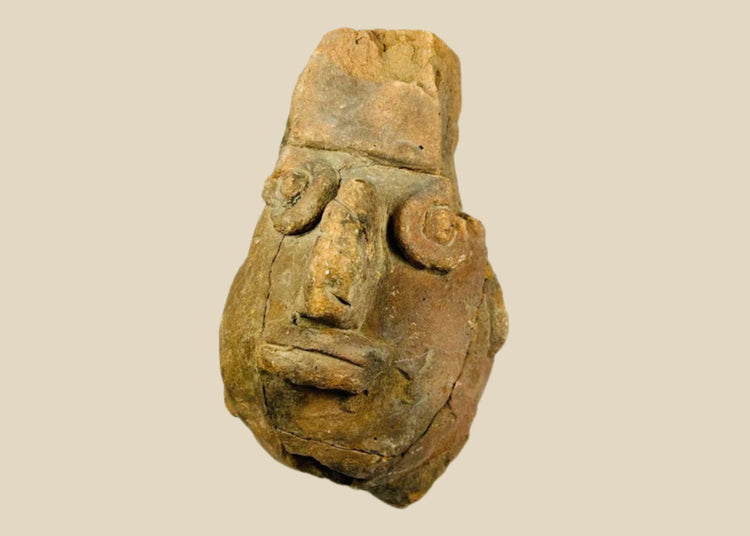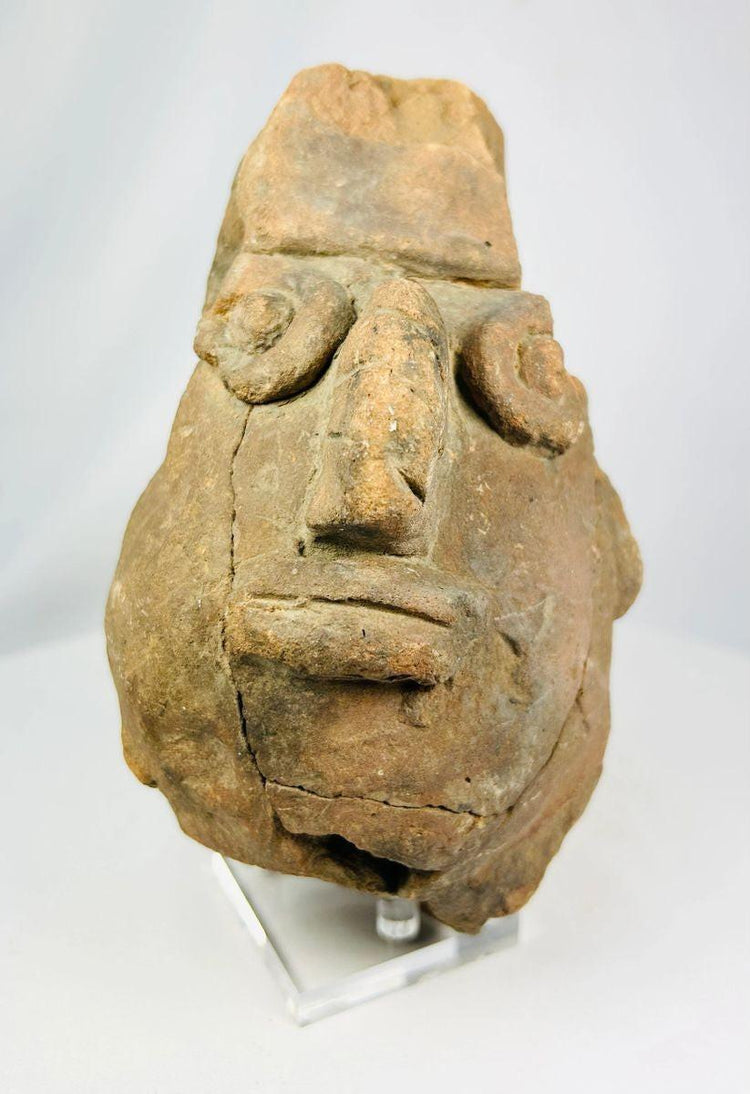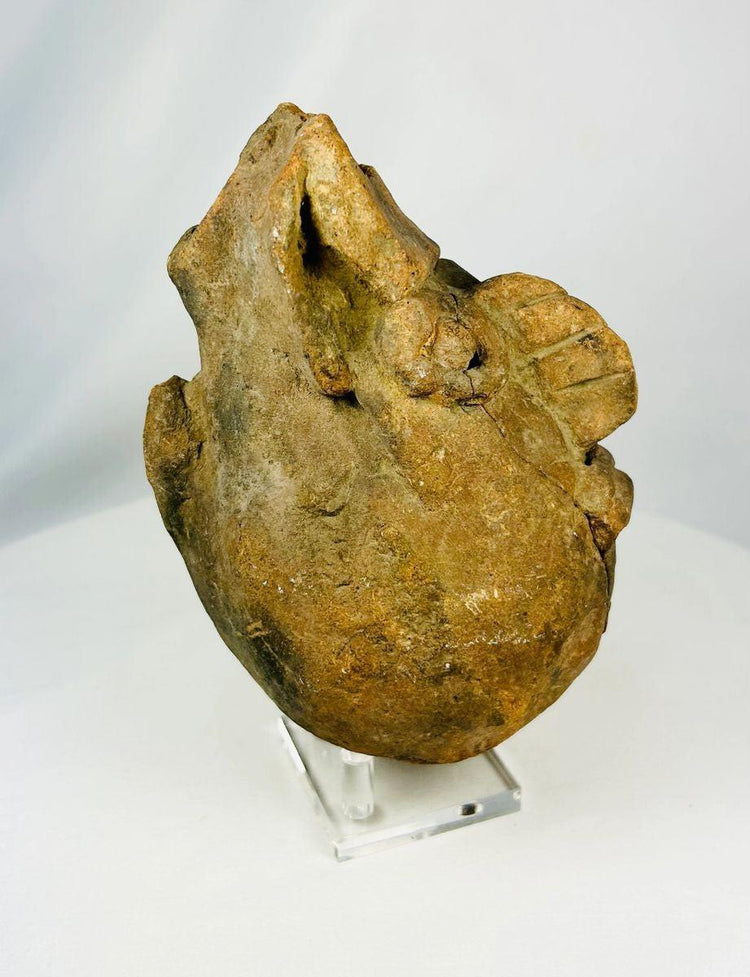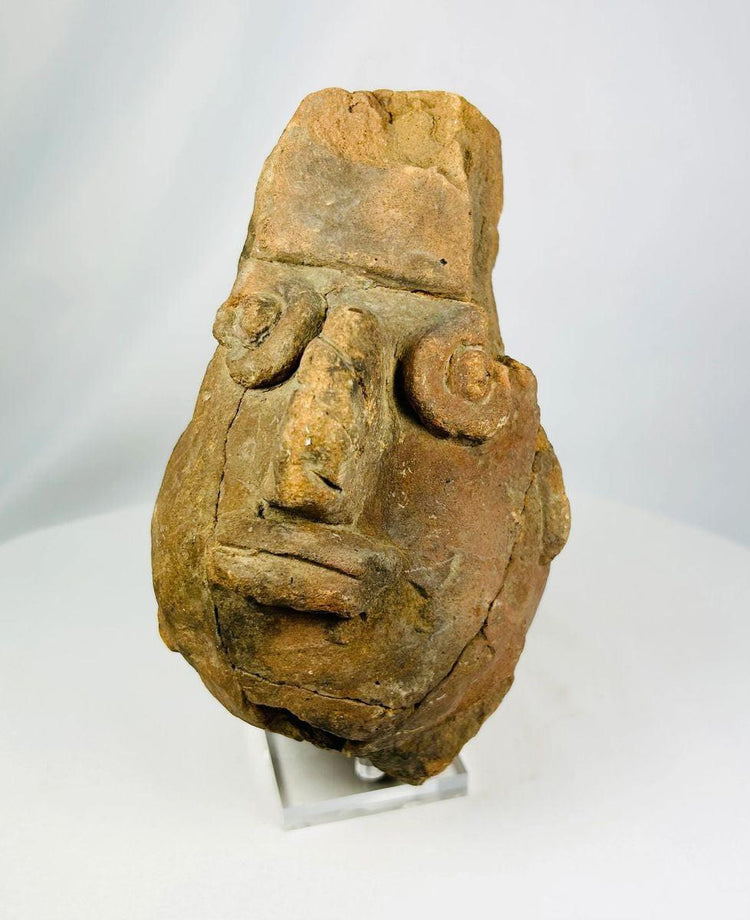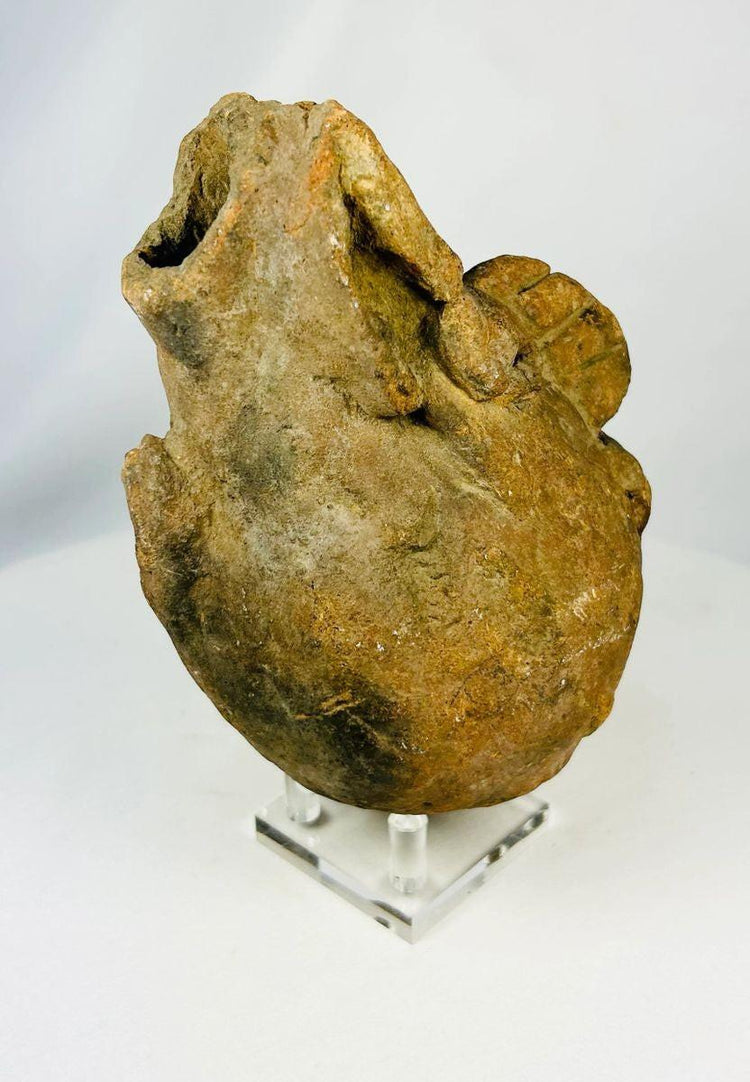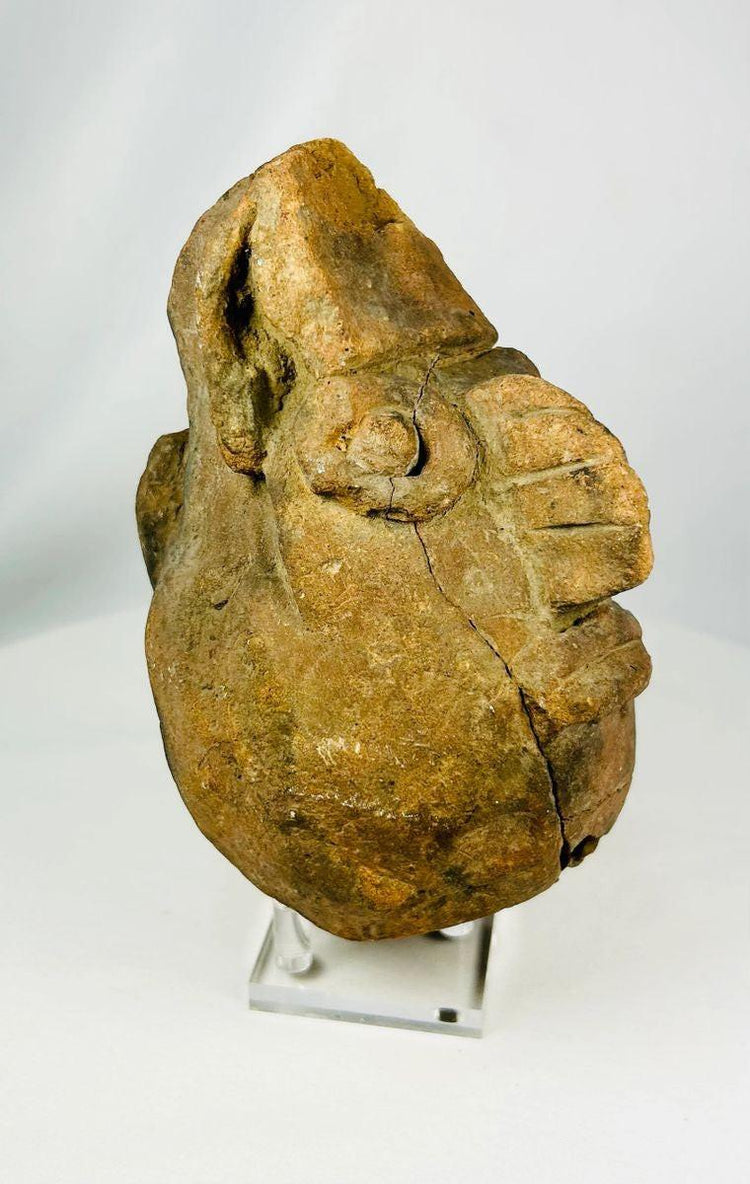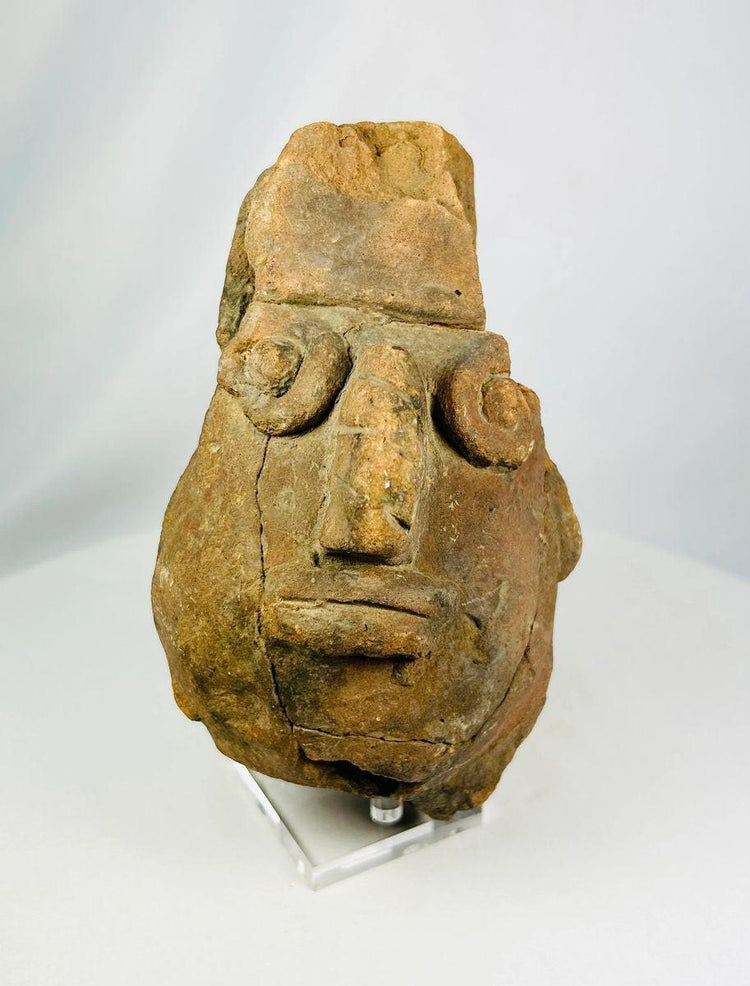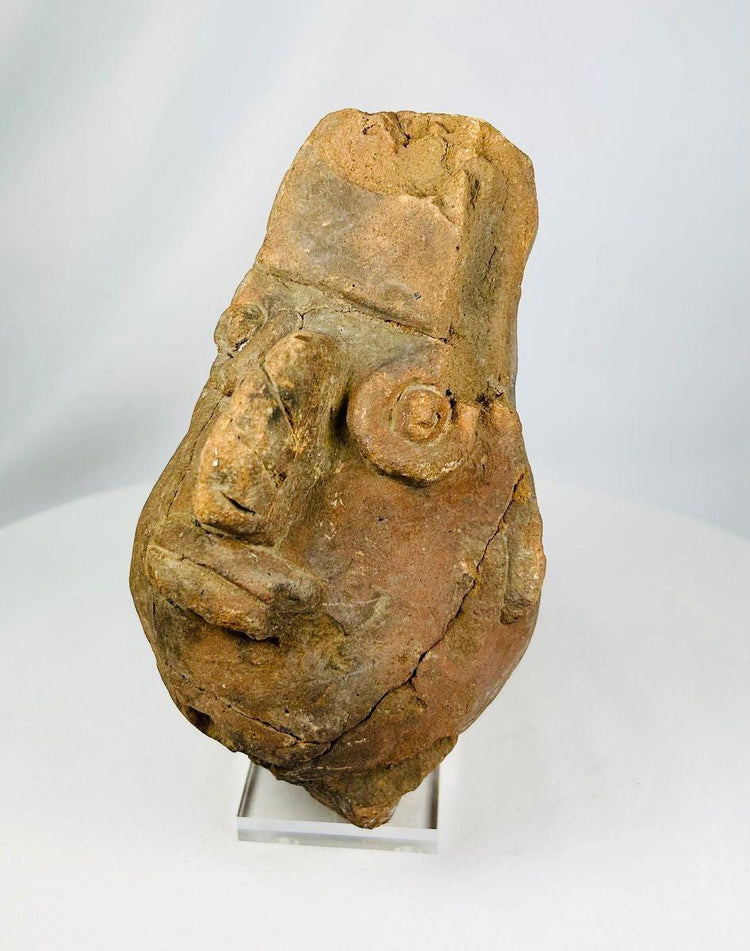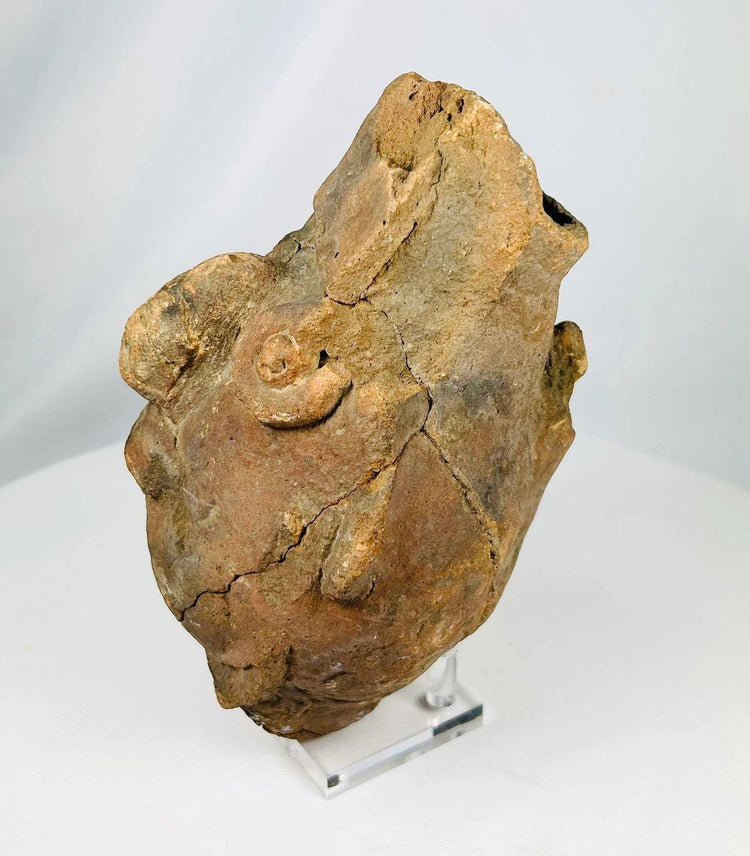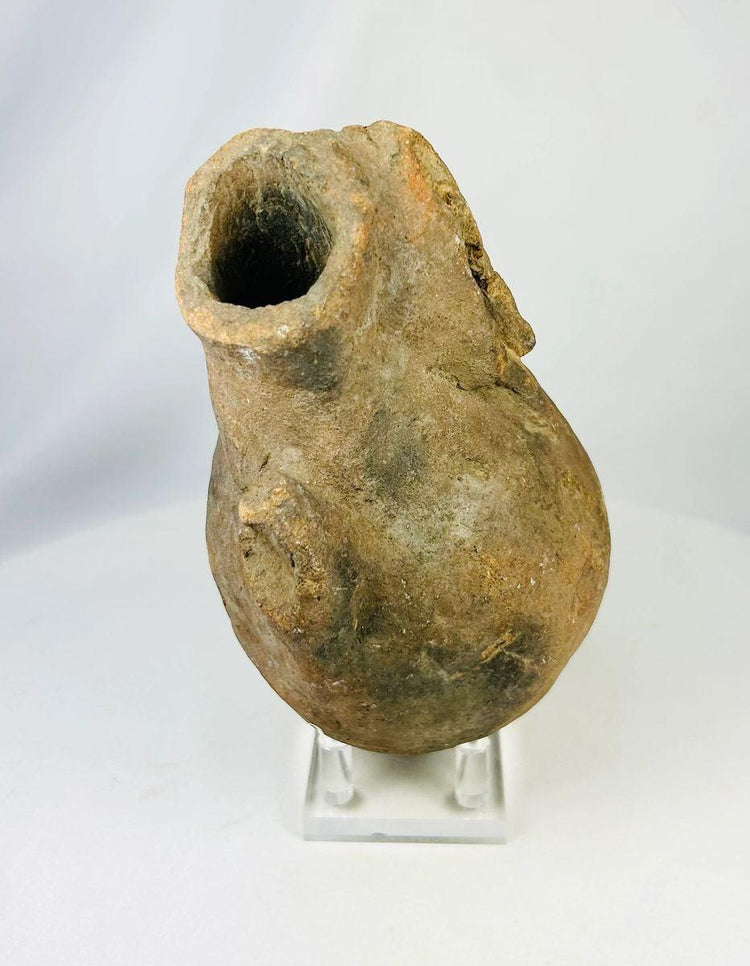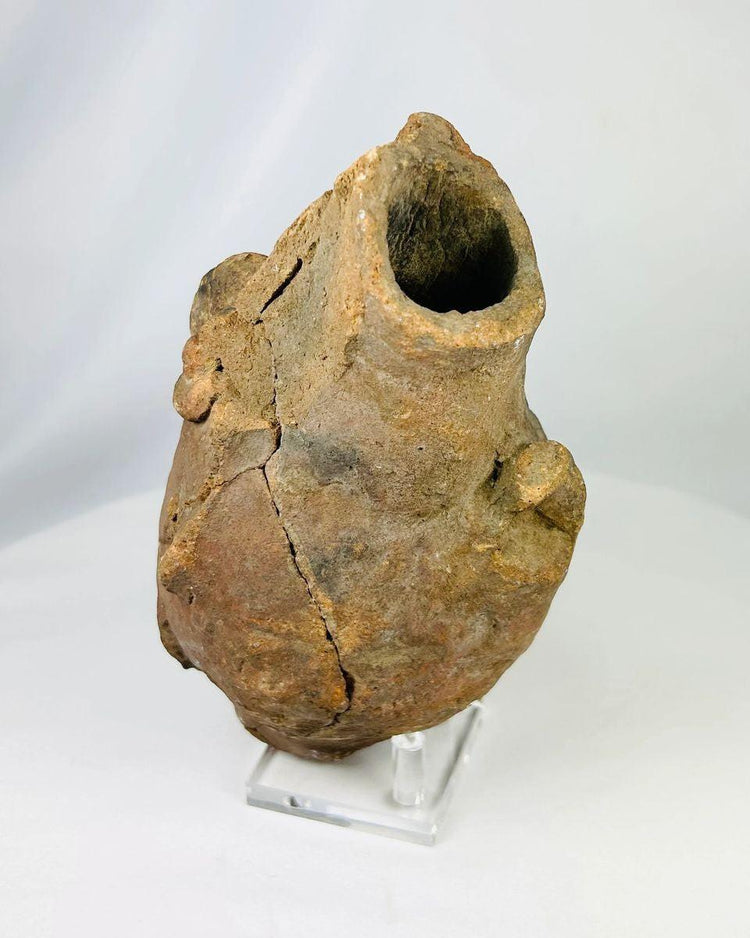Pre-Columbian Ecuador | Valdivia–Chorrera Anthropomorphic Head Vessel Fragment | Circa 1000–300 BCE
Description
More
Less
Historical Context & Origin
Region: Ecuador (Valdivia–Chorrera cultural sphere)
Material: Hand-modeled terracotta (low-fired clay)
Period: Late Valdivia to Early Chorrera Culture, circa 1000–300 BCE
Description
This rare Pre-Columbian ceramic vessel fragment represents an anthropomorphic head jar, a hallmark of early Ecuadorian ceremonial artistry. The face is rendered with bold abstraction: spiral-form eyes, an elongated geometric nose, and stylized rectangular lips that emphasize supernatural or shamanic qualities. The rounded body and rear spout suggest its function as a ritual libation vessel, used in ceremonies involving offerings or sacred liquids. Its reddish-brown clay surface is heavily patinated with fissures, encrustations, and mineral accretions, reflecting centuries of burial. Despite its fragmentary survival, the expressive face retains remarkable integrity, conveying the otherworldly power central to Andean cosmology.
Features
- Stylized anthropomorphic effigy head with spiral eyes and elongated nose
- Rear spout opening, indicating ritual use for pouring or libations
- Heavy earthen patina and mineral deposits from long-term burial
- Intact facial form with only minor loss consistent with age
Cultural Significance
Anthropomorphic vessels of the Valdivia and Chorrera cultures played an important role in early Andean ritual practice. These effigies were linked to ancestor veneration, fertility symbolism, and shamanic transformation. The spiral eyes are especially significant, often interpreted as supernatural vision or a conduit between earthly and spiritual realms. Such vessels were placed in ceremonial or funerary contexts, marking them as sacred objects of profound cultural meaning.
Condition
The vessel is in stable excavated condition, showing ancient surface patina, stabilized fissures, and mineral encrustations from burial. No evidence of modern restoration is present. The piece remains display-ready, with its facial features sharply preserved.
Dimensions (approximate)
Height: 8 in
Age
Estimated over 2,000 years old, dating to circa 1000–300 BCE
Description
Historical Context & Origin
Region: Ecuador (Valdivia–Chorrera cultural sphere)
Material: Hand-modeled terracotta (low-fired clay)
Period: Late Valdivia to Early Chorrera Culture, circa 1000–300 BCE
Description
This rare Pre-Columbian ceramic vessel fragment represents an anthropomorphic head jar, a hallmark of early Ecuadorian ceremonial artistry. The face is rendered with bold abstraction: spiral-form eyes, an elongated geometric nose, and stylized rectangular lips that emphasize supernatural or shamanic qualities. The rounded body and rear spout suggest its function as a ritual libation vessel, used in ceremonies involving offerings or sacred liquids. Its reddish-brown clay surface is heavily patinated with fissures, encrustations, and mineral accretions, reflecting centuries of burial. Despite its fragmentary survival, the expressive face retains remarkable integrity, conveying the otherworldly power central to Andean cosmology.
Features
- Stylized anthropomorphic effigy head with spiral eyes and elongated nose
- Rear spout opening, indicating ritual use for pouring or libations
- Heavy earthen patina and mineral deposits from long-term burial
- Intact facial form with only minor loss consistent with age
Cultural Significance
Anthropomorphic vessels of the Valdivia and Chorrera cultures played an important role in early Andean ritual practice. These effigies were linked to ancestor veneration, fertility symbolism, and shamanic transformation. The spiral eyes are especially significant, often interpreted as supernatural vision or a conduit between earthly and spiritual realms. Such vessels were placed in ceremonial or funerary contexts, marking them as sacred objects of profound cultural meaning.
Condition
The vessel is in stable excavated condition, showing ancient surface patina, stabilized fissures, and mineral encrustations from burial. No evidence of modern restoration is present. The piece remains display-ready, with its facial features sharply preserved.
Dimensions (approximate)
Height: 8 in
Age
Estimated over 2,000 years old, dating to circa 1000–300 BCE
You May Also Like




























